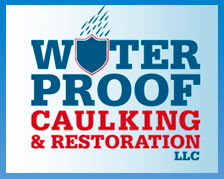 One of the most important ways to protect your building is through commercial caulking and sealing, namely filling joints and gaps to create a tight barrier against water, air, dust, and pests.
One of the most important ways to protect your building is through commercial caulking and sealing, namely filling joints and gaps to create a tight barrier against water, air, dust, and pests.
Proper sealing locks out moisture that causes deterioration, mold, and leaks, saving you money in the long run. It also prevents energy loss from air infiltration, reducing utility bills. You may not realize that high-quality commercial caulking directly supports green building certifications such as LEED.
Caulking for Energy Efficiency
Programs such as LEED (Leadership in Energy and Environmental Design) aim to streamline energy performance. Commercial buildings use approximately 17% of the nation’s energy, presenting a significant opportunity for efficiency gains.
Air leaks through poorly sealed joints waste massive amounts of energy for heating and cooling. Air infiltration can increase HVAC energy consumption by up to 40%. High-performance commercial caulking addresses this directly, as the air barrier created through precision sealing prevents conditioned air from escaping.
Tight building envelopes mean HVAC systems don’t overwork trying to maintain indoor conditions. Your newly sealed building can gain LEED points to increase efficiency.
Caulking for Air Quality
Indoor air quality is another essential component of green building certifications. Studies show poor air quality from irritants or pollution sources has wide-ranging negative health impacts. Accordingly, LEED emphasizes strategies to filter and dilute contaminants.
Effective perimeter sealing assists by preventing dust and other allergens from infiltrating interior spaces. It also reduces off-gassing from building materials and volatile organic compounds from the outside.
Workers in your newly sealed space will enjoy purer indoor air. Commercial caulking helps limit pollution sources, which aligns perfectly with LEED’s air quality prerequisites.
Caulking to Control Moisture
Excess moisture in buildings causes mold/mildew growth, wood rot, degradation of materials and components, and a host of related problems. Water intrusion through unsealed joints is a common culprit.
Beyond immediate leaks, moisture drives costly long-term maintenance issues. LEED recognizes wet buildings’ risks by awarding credits for drainage assessment, plumbing controls, and vapor barriers. Tight exterior caulking complements these measures, creating a formidable moisture protection system.
Keeping water out where possible via commercial sealing denies the chance to impact your property. The thorough moisture control approach cements LEED certification.
Caulking for Materials Selection
![]() LEED emphasizes environmentally responsible, durable building materials. Certain caulking products align well by meeting stringent chemical content standards. For example, acrylic latex caulking contains mainly water and traces low in volatile organic compounds.
LEED emphasizes environmentally responsible, durable building materials. Certain caulking products align well by meeting stringent chemical content standards. For example, acrylic latex caulking contains mainly water and traces low in volatile organic compounds.
Silicone-based caulking utilizes recycled plastic/silica content while avoiding harsh solvents. Using such “green” caulking shows a commitment to sustainability in both function and composition. Mindful product selection is a badge of honor for LEED applicants, so eco-conscious sealants make perfect sense.
Caulking to Conserve Resources
Constructing an efficient, tightly sealed building envelope conserves resources in two important ways. First, it reduces energy demand substantially over time, as less is required for heating/cooling thanks to mitigated air leakage.
Second, properly sealed buildings better withstand environmental exposure, extending the lifespans of materials, finishes, and components.
While LEED does award credits explicitly for building reuse versus new construction, resilient designs imply fewer replacements and less waste overall. Effective long-term commercial caulking bolsters resource conservation, a fundamental sustainability benefit in both aspects.
Caulking for Occupant Comfort
While LEED started out with a strong focus on the environment, the certification now includes indoor environmental quality as an essential category. Thermal regulation, ventilation, daylighting, acoustic performance, and other similar factors aim to create healthy, comfortable spaces.
Perimeter air sealing helps particularly with thermal and acoustic control. Preventing hot/cold air from getting in enables stable indoor temperatures. Containing noise ingress through gaps also supports acoustic goals. Buildings sealed purposefully for occupant comfort align seamlessly with LEED’s wellness initiative.
Caulking to Complement Commissioning
The commissioning process entails extensive building testing and adjusting to establish that all energy-related systems work together efficiently. Common problem areas, such as envelope leakage, undermine ideal performance.
Precision caulking locks out exterior conditions, giving HVAC equipment the best chance to operate as intended. It also facilitates important pressurization testing that helps balance ventilation rates.
Effective sealing through precision caulking complements the commissioning process by enhancing your building’s performance to gain maximum LEED credits. It is the perfect supporting measure for the extensive fine-tuning process.
Caulking for Enhanced Water Conservation
LEED incentives promote on-site water recycling and ultra-low-flow plumbing fixtures to reduce usage. Still, water loss via leaks or equipment failures undermines conservation goals.
 Moisture tracking into wall assemblies from the exterior also frequently causes plumbing issues. Both leakage and water damage require extensive remediation efforts, which use even more water for cleanup.
Moisture tracking into wall assemblies from the exterior also frequently causes plumbing issues. Both leakage and water damage require extensive remediation efforts, which use even more water for cleanup.
Thorough sealing safeguards against intrusion while protecting pipe assemblies from deterioration or other water-related damage. The enhanced infrastructure resilience pays sustainability dividends over time for LEED applicants.
Earn Your LEED Certification With Professional Commercial Caulking
Earning LEED or other green building certifications involves coordinating many sustainable design aspects into a cohesive, high-performance whole. The perimeter air barrier created by proper commercial caulking underpins this synergy in numerous ways. It reinforces efficiency, air purity, materials goals, and more while controlling moisture, the root of countless building headaches.
For professional commercial caulking services supporting energy efficiency, comfort, and green building certification, turn to Waterproof Caulking & Restoration. Contact us today at 484.265.9646 or online so our master-level professionals can help you enhance your property’s sustainability.
